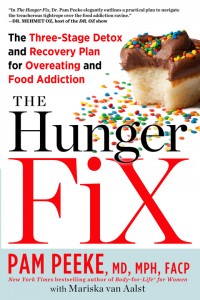Four Types of Bariatric Surgery and How to Decide Which One is Best For You
The surgical treatment of obesity is called bariatric surgery after the Greek words, baros, meaning "weight," and iatrikos, meaning "the art of healing." This is the most rapidly growing area of surgical practice in the Western world today. This reflects the ability of bariatric surgical procedures to provide a solution to an otherwise insoluble problem and the evolution of safer, less invasive and more conservative forms of procedures.
The surgical treatment of obesity has evolved over a period of more than 50 years. Today there are three bariatric procedures in use: gastric bypass, biliopancreatic diversion and laparoscopic adjustable gastric banding. Small bowel bypass is no longer performed.
1. Small Bowell Bypass
This procedure was introduced in the 1950s and there were various ways in which this operation was performed. Each method, however, shared the common principle of bypassing the normal absorptive capacity of the gut. In other words, you could eat quite a lot but the food wouldn't be absorbed into the body. Instead, you would have diarrhea. Such procedures were generally effective in achieving weight loss but they had a number of serious side effects, which ultimately has made them unacceptable.
2. Gastric Bypass
This operation was introduced more than 35 years ago and is still a good procedure. However, it does require major manipulation of the gut. Gastric bypass is most commonly used in the United States and about half of the operations are performed by the traditional open surgical approach with a long incision in the abdomen and half are performed laparoscopically (keyhole surgery).
The operation can be performed in a number of different ways but they all achieve their effect through two common features. Firstly, they create a small upper stomach so that you can only eat a small amount of food at any one time before you feel comfortably or uncomfortably full. Secondly, they each delay the emptying of the food from that small upper stomach into the rest of the gut in some way so that the feeling of fullness stays with you after the meal and you are not inclined to eat between meals.
In gastric bypass procedures, a stapling device is used to cut and separate completely a small piece of the top of the stomach from the rest of the stomach. The top part becomes the new stomach and the rest is closed off and not accessible any more. The upper part of the small intestine is then divided completely, again with the stapling device. One of the divided ends is attached to the new stomach to allow the food to enter the rest of the gut. The other end is joined to the small intestine further downstream so that the digestive juices from the liver, gallbladder, duodenum and pancreas can get back into the digestive pathway.
Stomach stapling is a big operation with a real risk of major complications and approximately 1% of people dies from these complications. It causes major changes in the gut and is essentially irreversible. The most common form of stomach stapling now used is the Roux-en-Y gastric bypass. This can be done as an open operation or laparoscopically. It is a relatively complex procedure that provides no opportunity for adjustment after the operation.
Another form of gastric stapling that is becoming more commonly used at some centers is the sleeve gastrectomy, in which most of the stomach is removed and discarded and a thin tube is left, with the hope that it will not expand in the years to come. Our previous experience strongly suggests that hope will not be realized. So far there has been very little published information about this procedure. We currently don't know about its risks and benefits and we don't know if the weight loss effect will last for even 5 years.
3. Biliopancreatic Diversion
Bilopancreatic diversion, commonly abbreviated to BPD, was introduced in the 1970s. This complex procedure removes much of the stomach and bypasses much of the gut. This procedure aims to reduce the size of the stomach to restrict intake and also to prevent absorption of the food by diverting it from the digestive enzymes of the gut. Although it can be done laparoscopically, it is generally performed through an abdominal incision to reduce the risks. About half to three-quarters of the stomach is removed completely. The small intestine is then divided and reconnected in such a way that the food goes one way (the alimentary limb) and the digestive enzymes go another way (the biliopancreatic limb). Most of the enzymes are reabsorbed before they can do anything. The rest of the enzymes meet the food in the last 2 feet (50 cm) of the small intestine - the common channel - to permit some limited absorption of food.
A variation of the BPD is known as the duodenal switch. It differs in only a minor way by changing the way most of the stomach is removed to retain the lower part of the stomach. It is not clear that there is any important different between the two procedures. The BPD generally achieves good weight loss but at the cost of significant symptoms and a serious risk of malnutrition, and so is not often performed. It can be done as an open operation or, sometimes, laparoscopically. It has the highest likelihood of death associated with the surgery of all the bariatric procedures.
4. Laparoscopic Adjustable Gastric Banding
The LAP-BAND?is an example of laparoscopic adjustable gastric banding and has been available since the 1990s. LAP-BAND?placement is far more gentle and safer than the preceding operations. It is almost always done laparoscopically (keyhole surgery) and it involves very little handling or dissection of the tissues. Nothing is cut or stapled or removed or redirected. The band is placed across the very top of the stomach. There is almost no stomach above the band. With minimal dissection a pathway is made across the back of the top of the stomach, and the band is placed along that pathway, closed and fixed into that position by suturing some of the stomach wall across the front of the band. The tubing is then connected to an access port which is placed under the skin of the abdominal wall.
Which Procedure is the Most Common?
There is significant variation in the preferred procedure between countries, often reflecting local regulatory and insurance factors.
In the United States, gastric bypass is still the most common option. The LAP-BAND?did not become available in the United States until 2001 and many insurance groups are still trying to avoid offering this option to their participants. However, the number of bands placed is increasing rapidly and is expected to become much more common than the gastric bypass option.
In Australia, the LAP-BAND?is the procedure of choice for more than 90% of people, with gastric bypass making up most of the rest of the procedures.
Biliopancreatic diversion is an uncommon procedure everywhere because of the risks, the constant presence of an offensive diarrhea and the concerns about the effects that a long-term lack of key nutrients will have on the body. In many countries it is not used at all.
Comparison of Procedures
At their best, gastric bypass and the other stomach stapling procedures are very good, enabling a good weight loss without too many side effects. However, they are not at their best often enough. The real dilemma with stomach stapling is how to create a new stomach that is exactly right on the day of operation and which remains exactly right for the rest of the patients life. This challenge is obviously too difficult. The body will always be changing, particularly stretching, in response to pressure.
Sometimes the settings are too tight initially, resulting in severe vomiting. At other times the settings are too loose, with insufficient weight loss. Most commonly, the settings are about right at the time of operation, but change over subsequent months and years so that, with stretching or with breakdown of the staple line, there is a return toward a normal stomach and the weight-reducing effect is lost.
The best weight loss after gastric bypass is in the first year. Generally, if you have not lost enough weight by then, you are not going to lose any more. The weight starts to come back on again after the second or third year. Because there is no ability to adjust the settings after the operation, the weight regain is not able to be controlled. It is very difficult for us to be sure about how durable the weight loss is after gastric bypass because more than half the people who have the operation are lost to follow-up by 5 years and so we cannot measure their weight. For those that are still being seen, it is most commonly reported that they have lost between 50% and 60% of their excess weight. If we assume that the ones who are missing have done less well - the usual reason why people stop coming to follow-up - the weight loss is probably well under 50% of excess weight at 10 years. This is not as good as has been achieved with the LAP-BAND?
Although stomach stapling is an acceptable option for some people, it has proved to be unacceptable to the vast majority of those in the community who are obese, either because of its risks and invasiveness or because of the difficulties in retaining the correct settings over a long period. It can be estimated that only one of every 200 people who have severe obesity in the United States would agree to a gastric bypass or other form of stomach stapling. The other 199 either have accepted their problem of obesity or are looking for a more acceptable alternative.
The LAP-BAND?surgery procedure has been developed to retain the good things that we have learned from stomach stapling, but to overcome the problems that made stomach stapling generally unacceptable. The key features of the LAP-BAND?that have led to its acceptance are its safety, minimal invasiveness, adjustability, reversibility and overall effectiveness. In our practice, we used gastric bypass for many years prior to the LAP-BAND?becoming available, but since 1993 we have no longer offered this option for the first treatment of obesity as it is clearly more dangerous, it is not adjustable or reversible and it is no more effective in the medium term than the LAP-BAND? We should always seek the simple and safe before the complex and risky. We don't crack a nut with a sledgehammer if a nutcracker is available.
-
How To Increase Metabolism With Quick and Easy Fat Torching Recipes!
If you have the need to lose weight fast and have a busy schedule
-
Stress And Weight Gain
Stress and Weight Gain in the 21st Century Most of us by now are aw
-
Mommy Makeover
In this day and age, there is simply no excuse for unhealthy life
-
How To Tackle Your Weight Loss Problems
There are any number of simple solutions to your weight loss problems
-
Burn the Fat Feed the Muscle review: The solution to your problem
Tom Venuto has written a health management book that professes the
-
What are Benefits of Fish Oil in our Body?
There’s something special about that stuff called fish oil. D
- DON'T MISS
- Eating carbs better than eating fats for weight watchers: NIH study
- Rapid loss of weight Diet plan
- Weight Loss – “Taking Stock of Yourself”
- Weight Loss: Think Thin, Be Healthy; EFT Can Help
- Learning How To Get Taller
- Losing Abdominal Fat Ab Workouts That Wont Squander Your Time In The Gym
- Obesity - Is There A Cure?
- Weight Loss A Work In Progress
- How To Lose Weight Without So Much Hassle
- Biofuels In The U.S-Just The Facts




